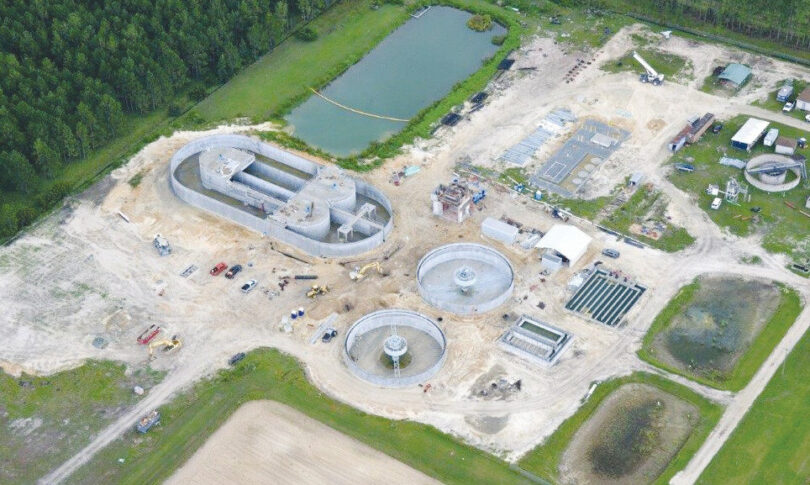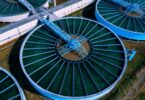The water industry is seeing greater adoption of advanced technology, data analytics, and predictive modelling to enhance operational efficiency, improve equipment reliability, and ensure sustainability.
These technology interventions need a concerted effort that considers people, processes, and technology to establish operational success after the planning phase. Before we look at how water utilities use technology, let’s understand the challenges precipitating this change.
Converging and complex challenges
Efficiency remains key for water utilities as states are spending $20 billion of the State and Local Fiscal Recovery Funds included in the American Rescue Plan Act on water infrastructure. Furthermore, overall federal funding for clean drinking water systems has shrunk dramatically, from 63% of capital improvements in 1977 to 9% almost 40 years later1.
The US Geological Survey (USGS) estimates that in 2015 (the most recent year available), California’s public water suppliers withdrew an average of about 5,147.74 million gallons of water per day for treatment and distribution to customers. Those public water suppliers face enormous challenges when it comes to replacing and repairing their systems. The U.S. Environmental Protection Agency (EPA) recently found a 20-year capital improvement need of more than $51.03 billion for California’s water systems to continue to provide safe drinking water2.
Another challenge is the change in customer expectations. Customers increasingly want their water utility to help them identify when they have water leaks and predict the future cost of that leak in their bill. Data analytics can help utilities improve communication and outreach for customer service.
Water utilities are also facing a host of other challenges:
- Daily pressures from aging infrastructure, the resulting failures, and the cost of these failures
- Increasing demand for expansion of water distribution and wastewater collection
- Regulatory pressures and compliance requirements
- Environmental sustainability efforts
- An aging workforce
- Challenges with asset management strategies, especially to manage equipment replacement to maximize total cost of ownership
These hurdles also present an opportunity to reshape the industry through innovation, enhancing the resilience, sustainability, and efficiency of water utility operations.
Technology in action
Technologies such as AMI, IoT, AI, and predictive models are helping water utilities enhance water quality, optimize resource management, communicate more seamlessly with customers, and adapt to the challenges posed by climate change.
For example, data analytics can help utilities understand customer interactions. Integrated with an enterprise-wide CRM system, these insights allow utilities to develop targeted communication strategies within customer classifications. For instance, younger customers likely prefer text and cell phone communications, while some prefer email or telephone.
One of the most impactful technological advancements in water facilities is the implementation of the Internet of Things (IoT) and smart sensors. These devices enable real-time monitoring of water quality, flow rates, and system health. Smart sensors can detect anomalies such as leaks, contamination, or pressure changes, allowing for immediate response and reducing water loss.
AMI paired with smart meters provides detailed consumption data, empowering both utilities and consumers to monitor and manage water usage more effectively. AMI can also open up IoT options to allow pressure monitoring, water quality measurement and overall system knowledge. This data not only helps in identifying inefficiencies but also in promoting water conservation practices. The use of customer usage information along with information from SCADA enables the development of a digital twin of the distribution system. This opens many analysis options related to risk assessments, capital improvement planning and operations optimization.
The role of automation and machine learning
Automation also now plays a crucial role in optimizing water treatment processes. Advanced control systems can automatically adjust chemical dosing, filter backwashing, and other operational parameters based on real-time data. This reduces human error, enhances process efficiency, and ensures consistent water quality. Several other examples of advanced technology for operations include:
Data analytics: Machine learning (ML) and artificial intelligence (AI) support advanced data analytics in water facilities. These technologies analyze historical and real-time data to identify patterns, predict outcomes, and optimize operations. For example, ML algorithms can predict equipment failures by analyzing trends in sensor data, enabling preemptive maintenance and reducing downtime. Predictive modeling is also helping utilities better manage supply and demand.
f: By analyzing historical usage data, weather patterns, and demographic trends, predictive models can accurately predict future water demand. These forecasts allow utilities to make informed capital improvements and optimize resource allocation, ensuring that water supply meets demand even during peak periods or drought conditions. Forecasting within customer classes can consequently support strategies for economic development and pricing models.
Infrastructure management: Aging infrastructure is a significant challenge for water facilities, and predictive modeling aids in proactive infrastructure management by identifying components at risk of failure. By simulating different scenarios, these models help prioritize maintenance and replacement activities, extending the lifespan of assets and reducing operational costs.
For instance, predictive models can analyze the impact of environmental factors such as temperature fluctuations and soil conditions on pipeline integrity. This enables utilities to implement targeted interventions and reduce water loss, preventing costly repairs and service disruptions.
Implementation excellence
While each of these applications is proving transformative, data and technology alone cannot support results by magic. They need intent and expertise. That’s why water utilities are working with partners to create specific strategies that make technology projects operationally successful and data a valuable and strategic utility asset.
For utilities looking to ramp up their technology projects, it is critical to build a plan that helps to understand the best technology, integrations, and sequence of implementation. The next step is to create a plan for adoption and scale, ensuring organization-wide impact.
A structured approach that addresses the specific challenges each utility faces can set the foundation for future success, ensuring utilities serve each of their stakeholders effectively while serving as a model for the industry.
About The Author: Don Rankin is an Executive Consultant of Technology Planning and Implementation Consulting at E Source, an industry-leading research, data science, and consulting firm helping utilities make and implement better data-driven decisions that positively impact their customers, their bottom line, and our planet. For more information, please visit www.esource.com.
1: When $20 Billion Isn’t Enough: Water Infrastructure; Governing.com; June 19, 2024
2: National Resources Defense Council (NRDC)
Related articles:
InfoTiles digital analytics intelligence platform







